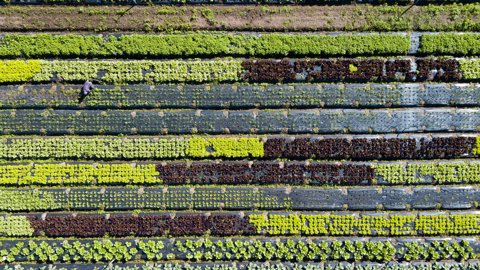On behalf of its pension fund client ABP, APG has invested USD 15.5 million in the seventh issuance of the Women’s Livelihood Bond Series (WLB7). APG’s Simone Andrews (Senior Responsible Investment Manager) and Adam Hynes (Senior Portfolio Manager) share insights into the innovative structure and impact of this investment.
In brief
• WLB7 raised USD 60 million to support over 700,000 women and girls across four countries in South and Southeast Asia.
• The bond provides institutional capital to underserved women-focused businesses in regions that typically lack access to such funding.
• The investment provides APG’s client with an attractive risk/return profile, offering an innovative approach to credit protection while producing deep impact.
• Proceeds support SDG 5 (Gender Equality) and SDG 13 (Climate Action), targeting women-focused enterprises across five sectors. The bond also complies with the Orange Bond Principles.
The WLB series was developed by Impact Investment Exchange (IIX), a Singapore-based impact investor that focuses on supporting women and girls in underserved communities in the Global South. WLB7 is expected to provide affordable credit to between 734,000 and 763,000 underserved women in South and Southeast Asia—individuals historically excluded from financial markets or facing gender-based barriers to financial access. Its predecessor, WLB6, was recently named Corporate Sustainability Bond of the Year by Environmental Finance.
What makes the WLB platform’s credit protection features innovative?
Hynes: “The WLB series is a great example of blended finance and the role governments and development banks can play to derisk capital through mechanisms like guarantees and subordinated first-loss layers. One key feature is a 40% principal guarantee provided by the Swedish International Development Cooperation Agency (Sida), covering potential loan losses from underlying borrowers. Additionally, the capital structure includes approximately USD 7 million in subordinated capital, which serves as first-loss protection before senior bondholders are impacted. The two credit enhancement features combine for an effective 20% first loss cushion.
Importantly, the International Finance Corporation (IFC), part of the World Bank Group, is a major contributor to the subordinated tranche through the IIX Women’s Catalyst Fund and also co-invests alongside us in the senior tranche.
The structure provides a true balance of risk, return, and impact. This is not concessionary capital—we expect to achieve a strong return relative to the risk for our client. The yield is just under 6%, which is comparable to returns from lower rated emerging market and developed market corporate issuers.”
What does APG as an anchor investor contribute beyond capital?
Andrews: “As a long-term responsible investor, we have an important role in supporting blended finance transactions like WLB7. Part of our role as an anchor investor is to catalyze broader investor participation and demonstrate that these impact-driven transactions are both viable and scalable, while offering attractive return potential. Ultimately, we see this not just as a transaction, but as a strategic partnership, building off our participation in WLB6. For example, we currently serve as a member of the Orange Movement Advisory council—a global initiative advancing gender-equal, climate-smart community-led investing.”
Hynes: “We’re generating impact through the underlying borrowers and their communities, but also by partnering with IIX to support the growth of the WLB series going forward, which aligns with our pension fund clients’ long-term impact ambitions.”
How is oversight structured—both in terms of credit and impact monitoring?
Hynes: “As IIX brings in more investors and the size of these transactions grow; they’ve expanded their in-house credit team. This team actively monitors all existing borrowers—not just those tied to this issuance, but also from previous bond series that are still outstanding. In parallel, we conduct our own due diligence on IIX’s investment process and actively monitor each underlying borrower post investment, while occasionally collaborating with other stakeholders in the WLB series.”
Andrews: “IIX’s impact reporting is very robust. We will receive semi-annual and annual impact reports on the underlying borrowers in WLB7, and maintain ongoing dialogue with the IIX team throughout the year. IIX will continue to track impact performance compared to a baseline target, which allows investors to measure their impact. Reporting on metrics like improved income generation for each borrower allows our clients to understand the real-world impact their capital generates. Additional output and outcome metrics will be reported on, such as the number of women entrepreneurs receiving loans, which helps us track progress on an annual basis.”
What makes this a distinctive impact opportunity within the fixed income space?
Andrews: “ABP recently expanded its impact mandate to include credit, and we are proud this is the first investment under that framework. Fixed income is an important asset class for achieving impact for several reasons. First, the scale of impact is significant—over 700,000 underserved women and girls across four countries. In many low- and middle-income regions access to capital for women and girls is deeply unequal, and this bond helps close that gap.
The bond supports both SDG 5 (Gender Equality) and SDG 13 (Climate Action). It’s not only about empowering women and girls—it also addresses environmental challenges. Proceeds are directed to portfolio companies in agriculture, water and sanitation, clean energy, SME lending, and microfinance. These companies use the funds to issue new loans to women—not to refinance existing debt. That highlights the additionality feature in fixed income. It’s about enabling access to financial services for underserved communities, which is hard to replicate in other asset classes.
It’s also important to note that this is a blended finance transaction, involving IFC, Sida, and institutional investors like us. These deals are complex and require cross-functional collaboration from teams committed to both impact and financial performance.”



